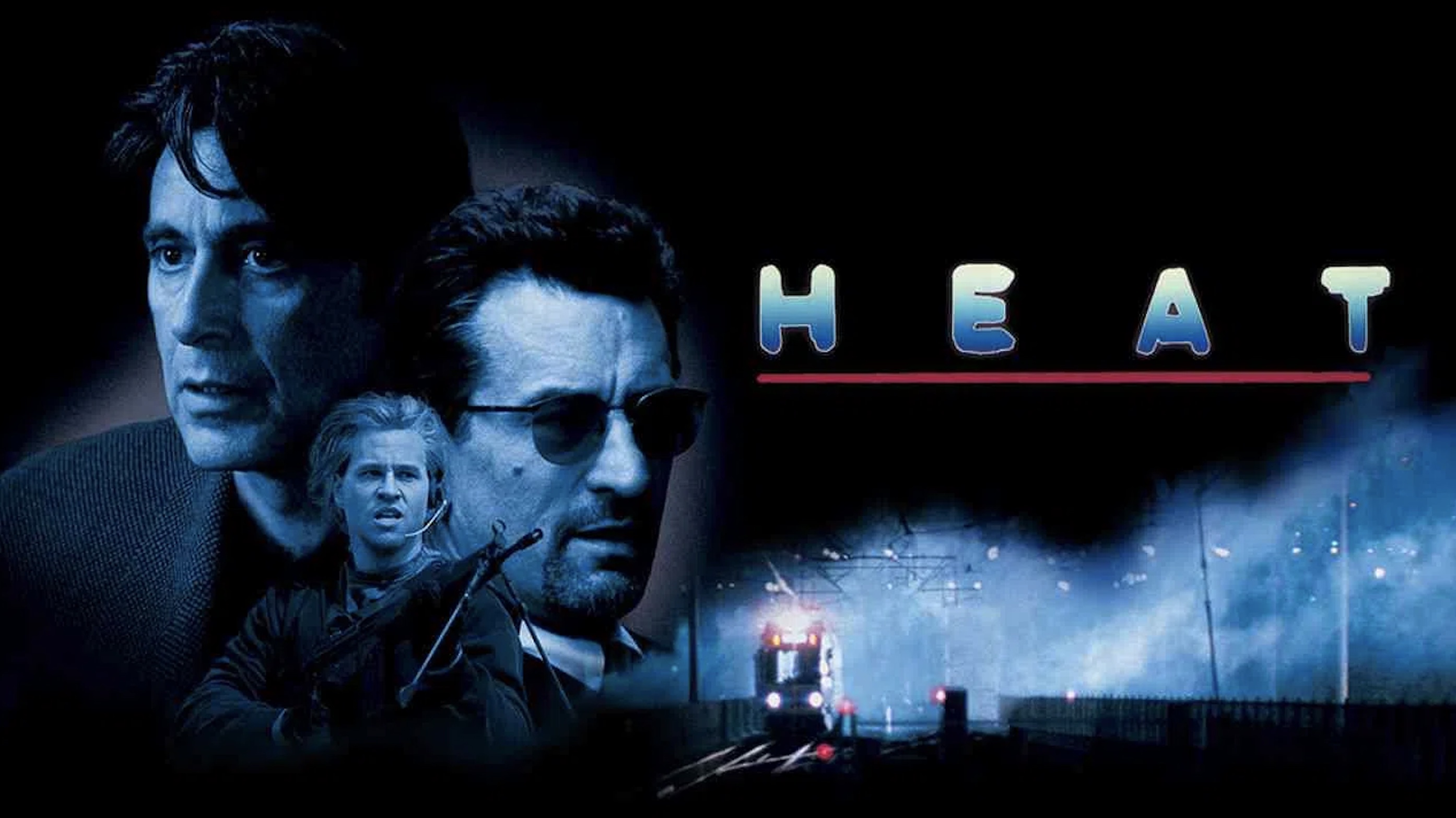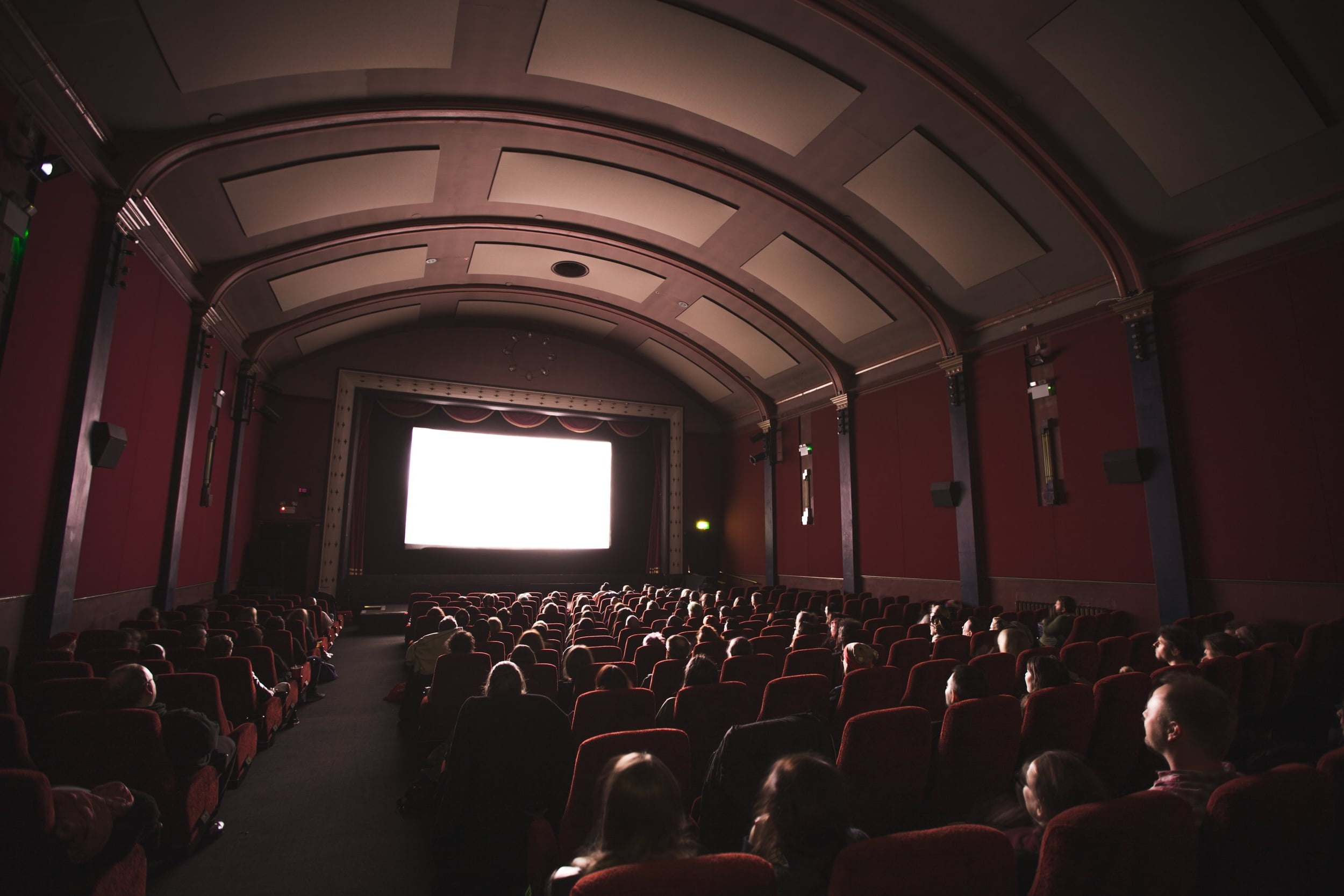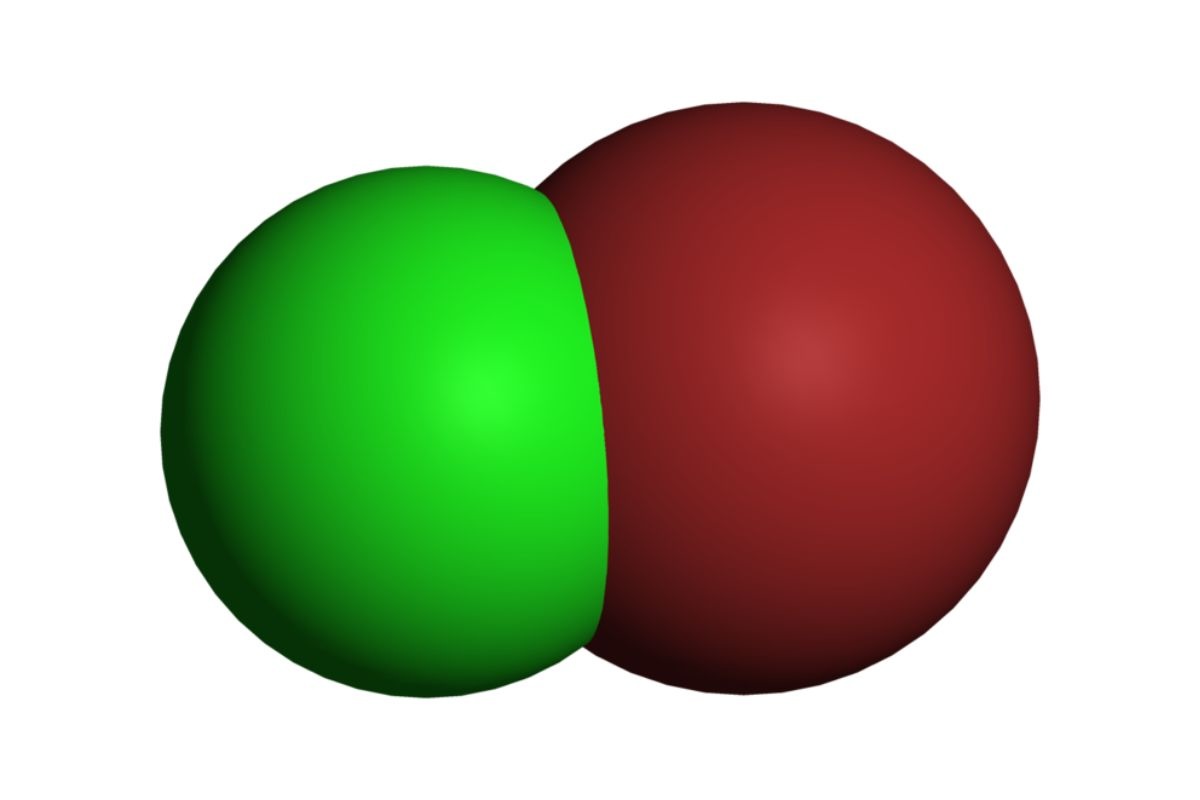
Heat is an iconic crime thriller that has cemented its place in cinematic history. Directed by Michael Mann and released in 1995, the film is a tour de force of storytelling, acting, and action sequences. Heat brings together an all-star cast featuring heavyweights like Robert De Niro, Al Pacino, Val Kilmer, and Jon Voight. Set in the gritty streets of Los Angeles, Heat follows the enthralling cat-and-mouse game between a seasoned detective and a skilled professional thief.
With its gripping plot, stunning cinematography, and intense performances, Heat has captivated audiences and critics alike. The film has left a lasting impact on the genre, influencing countless crime thrillers that followed. In this article, we’ll delve into 49 fascinating facts about Heat, ranging from behind-the-scenes trivia to interesting tidbits about the characters and their development. So, grab your popcorn and get ready to dive into the world of Heat!
Key Takeaways:
- Heat is a gripping crime drama inspired by real events, featuring a star-studded cast, intense action sequences, and a thought-provoking exploration of loyalty, obsession, and the blurred lines between good and evil.
- Director Michael Mann’s meticulous attention to detail, the iconic performances of Al Pacino and Robert De Niro, and the film’s enduring influence on the crime genre make Heat a must-watch classic for fans of intense storytelling.
The Inspiration Behind the Film
The movie Heat, directed by Michael Mann, was inspired by a real-life conflict between a group of professional bank robbers and the LAPD in the 1960s.
Star-Studded Cast
The film boasts an impressive ensemble cast, including Al Pacino, Robert De Niro, Val Kilmer, Jon Voight, Tom Sizemore, Ashley Judd, and Natalie Portman.
Mann’s Passion Project
Heat was a passion project for director Michael Mann, who had been developing the story for over a decade before it went into production.
The Ultimate Showdown
The film centers around the cat-and-mouse game between Al Pacino’s dedicated LAPD lieutenant Vincent Hanna and Robert De Niro’s skilled criminal mastermind Neil McCauley.
Meeting of Legends
This was the first film that brought Al Pacino and Robert De Niro together on-screen for an extended period of time, despite both having appeared in The Godfather Part II.
Authentic Heist Scenes
The heist scenes in Heat were meticulously choreographed and shot on location to provide a realistic depiction of criminal activities. The crew worked closely with ex-convicts and experienced criminal consultants.
The Bank Shootout
The intense bank shootout scene, which lasts for over 10 minutes, is considered one of the most realistic and memorable shootouts in movie history.
Instant Cult Classic
Despite having moderate box office success upon its initial release in 1995, Heat has gained a massive following over the years and is now regarded as a cult classic.
Mann’s Attention to Detail
Director Michael Mann is known for his meticulous attention to detail, and Heat is no exception. From the costumes to the locations, every aspect of the film was carefully crafted.
The Coffee Shop Scene
One of the most memorable scenes in the film takes place in a coffee shop, where Al Pacino and Robert De Niro’s characters engage in a tense face-to-face conversation. The scene was shot in one take.
The Heat Score
The film’s score was composed by Elliot Goldenthal and features a blend of atmospheric electronic music and orchestral elements, adding to the tense and suspenseful atmosphere.
Heat’s Lengthy Runtime
The runtime of Heat is approximately 2 hours and 50 minutes, allowing the story to unfold at a deliberate pace and giving each character ample time to develop.
Realistic Dialogue
The film’s screenplay features realistic dialogue, thanks to Michael Mann’s meticulous attention to detail and his dedication to capturing the essence of the characters.
Real Law Enforcement Professionals
To ensure the accuracy of the film, Michael Mann consulted with real law enforcement professionals, including former detective Chuck Adamson and renowned FBI agent John Santucci.
Iconic Quotes
Heat is packed with memorable quotes, such as Al Pacino’s famous line, “I’m angry. I’m very angry, Ralph. You know, you can ball my wife if she wants you to. You can lounge around here on her sofa, in her ex-husband’s dead-tech, post-modernistic bullshit house, if you want to. But you do not get to watch my fucking television set!”
A Sound Editing Marvel
Heat received critical acclaim for its exceptional sound editing, particularly the use of gunshots and ambient noise during the intense action sequences.
The Influence on Christopher Nolan
The realistic and gritty style of Heat served as a major influence on filmmaker Christopher Nolan, who has cited the movie as a reference for his own work, particularly The Dark Knight.
Iconic Poster Art
The film’s poster, featuring the silhouettes of Al Pacino and Robert De Niro against a cityscape, has become iconic and is instantly recognizable among movie enthusiasts.
Heat’s Impact on Pop Culture
Heat has made a lasting impact on pop culture, inspiring countless parodies, references, and homages in television, music, and other films.
A Tale of Two Worlds
Heat explores the parallels between the lives of law enforcement officers and criminals, blurring the lines between right and wrong and delving into the nature of obsession and loyalty.
Heat’s Box Office Success
While not an immediate blockbuster, Heat grossed over $187 million worldwide and has continued to generate revenue through home video sales and streaming platforms.
Real-Time Action
The film takes place over a span of just a few days, adding to the sense of urgency and the feeling of being immersed in the characters’ lives.
The Unspoken Connection
Al Pacino’s character, Vincent Hanna, and Robert De Niro’s character, Neil McCauley, share a deep connection and mutual respect, which is evident in their interactions throughout the film.
International Acclaim
Heat received critical acclaim not only in the United States but also internationally, with praise for its realistic portrayal of the criminal underworld and the dynamics of law enforcement.
The Hunt for Neil McCauley
Vincent Hanna becomes obsessed with capturing Neil McCauley, going to great lengths and sacrificing personal relationships to bring him to justice.
Iconic Car Chase
Heat features a thrilling car chase sequence through the streets of Los Angeles, showcasing the skill and precision of both the criminals and the police.
The Art of Surveillance
The film highlights the meticulous surveillance techniques employed by both the police and the criminal gang, illustrating the lengths they will go to in order to gain an advantage.
The Nina Simone Connection
Heat features an iconic scene where Neil McCauley listens to Nina Simone’s “Sinnerman” in his car, emphasizing his complex and introspective nature.
The Thematic Use of Fire
Fire is a recurring motif in Heat, symbolizing both destruction and transformation, echoing the characters’ lives and their relentless pursuit of their goals.
Authentic Gun Handling
The actors underwent intensive training to accurately handle firearms, adding to the realism of the action sequences in the film.
Mann’s Visual Style
Director Michael Mann is known for his distinctive visual style, which is on full display in Heat through the use of atmospheric lighting and sweeping cinematography.
The Humanization of Criminals
Heat highlights the humanity and flaws of its criminal characters, offering a nuanced perspective on their motivations and actions.
Heat’s Influence on Video Games
The game Grand Theft Auto IV took inspiration from Heat, particularly in its realistic depiction of crime and its attention to detail in recreating a cityscape.
Heat’s Legacy
Heat’s legacy continues to resonate in the world of cinema, serving as a benchmark for crime dramas and character-driven narratives.
The Production Design
The production design of Heat was integral in creating a visually striking and authentic portrayal of Los Angeles, capturing its gritty underbelly.
The Sacrifices of Law Enforcement
Heat delves into the personal sacrifices made by law enforcement officers, highlighting the toll their demanding and high-stakes careers can have on their personal lives.
The Infamous Dinner Scene
In one memorable scene, the criminal gang and their significant others gather for a tense dinner, showcasing the complexities of their relationships.
Neil McCauley’s Code
Neil McCauley lives by a strict code, often preaching the importance of not having attachments and being willing to walk away from anything at a moment’s notice.
The Chase at the Airport
Heat culminates in a dramatic chase sequence at Los Angeles International Airport, where Vincent Hanna and Neil McCauley face off one final time.
The Role of Fate
The film explores the concept of fate and the idea that certain events and encounters are meant to happen, regardless of the choices made by the characters.
The Emotional Toll
Heat delves into the emotional toll that a life of crime and the pursuit of justice can have on individuals, both in their personal and professional lives.
A Study in Contrasts
The film presents contrasting lifestyles, with the criminals living a high-risk and intense existence, while the law enforcement officers navigate the challenges of maintaining order within the boundaries of the law.
The Legacy of Vincent Hanna’s Speech
Vincent Hanna’s passionate and introspective monologue about his dedication to his work and the toll it takes on him has become one of the most memorable moments in film history.
The Collaboration of Pacino and De Niro
Al Pacino and Robert De Niro’s collaboration on Heat was highly anticipated by fans and critics alike, resulting in powerful performances from both actors.
Losses and Sacrifices
Heat showcases the losses and sacrifices made by all the characters involved in the criminal activities, further illustrating the consequences of their choices.
The Emotional Core
At its core, Heat is a story about human connections and the search for meaning, with each character grappling with their own personal demons and desires.
Heat’s Cinematic Influence
Heat has influenced numerous filmmakers, who have been inspired by its realistic portrayal of crime, character-driven storytelling, and its exploration of moral gray areas.
The Power of Silence
Heat masterfully uses moments of silence and non-verbal communication to convey the intensity and significance of certain scenes, adding to the overall tension of the film.
The Enduring Legacy
Heat continues to captivate audiences and serve as a benchmark for crime dramas, reminding us of the power of expert storytelling and the influence of unforgettable performances.
Heat is a seminal film that combines intense action, complex characters, and a thought-provoking narrative. The story follows the parallel lives of LAPD detective Vincent Hanna and skilled criminal Neil McCauley as they navigate the dangerous world of heists and law enforcement. The movie explores themes of obsession, loyalty, and the blurred lines between good and evil.
Heat is brought to life by a star-studded cast, including Al Pacino as the relentless Detective Hanna and Robert De Niro as the calculating and disciplined thief McCauley. Their performances, along with the supporting cast, bring depth and authenticity to the characters and their relationships.
The film’s memorable moments include the epic bank shootout, the intense coffee shop meeting between Hanna and McCauley, and the emotional toll that their lifestyles take on their personal lives. Heat’s iconic poster and its impressive soundtrack, featuring the haunting “Sinnerman” by Nina Simone, have become synonymous with the film’s legacy.
Director Michael Mann’s attention to detail and his distinctive visual style, combined with the realistic gun handling and the meticulous authenticity of the heists, contribute to the film’s immersive experience. Heat has also had a significant influence on subsequent filmmakers, particularly in the crime genre, with its realistic portrayals and complex character dynamics.
As a cult classic, Heat continues to captivate audiences and remains an enduring piece of cinema. Its exploration of the human condition, memorable performances, and expert storytelling make it a must-watch for any fan of crime dramas and character-driven narratives.
Conclusion
In conclusion, “Heat” is an iconic crime thriller that has captivated audiences since its release in 1995. The film is known for its stellar cast, gripping storyline, intense action sequences, and thought-provoking exploration of themes such as loyalty and obsession. Directed by Michael Mann, “Heat” boasts an impressive ensemble cast including Robert De Niro and Al Pacino, who deliver unforgettable performances that add depth and complexity to their respective characters. The movie’s meticulous attention to detail, realistic portrayal of heists, and emotionally charged confrontations between the protagonist and antagonist have solidified its status as a cult classic. Whether you’re a fan of crime movies, character-driven dramas, or action-packed thrillers, “Heat” is definitely a must-watch film that continues to stand the test of time.
FAQs
1. Who directed the movie “Heat”?
Michael Mann directed the movie “Heat.”
2. When was “Heat” released?
“Heat” was released in 1995.
3. Who are the main actors in the film?
The main actors in “Heat” include Robert De Niro, Al Pacino, Val Kilmer, and Jon Voight.
4. What genre does “Heat” belong to?
“Heat” is a crime thriller.
5. What is the plot of the movie?
The movie revolves around a skilled thief and a dedicated detective, and their cat-and-mouse pursuit as their paths intersect.
6. Is “Heat” based on a true story?
No, “Heat” is not based on a true story, but it is inspired by actual events and real-life criminals.
7. How long is the movie “Heat”?
The runtime of “Heat” is approximately 2 hours and 50 minutes.
8. Did “Heat” receive any awards?
Although “Heat” didn’t win any major awards, it garnered critical acclaim and has since gained a dedicated fanbase.
9. Is “Heat” suitable for all audiences?
No, “Heat” is rated R due to its violence, language, and adult content.
10. Can I stream “Heat” online?
Yes, “Heat” is available for streaming on various platforms like Netflix, Amazon Prime, and Hulu.
If you're fascinated by the gritty streets of Los Angeles, captivated by the thrilling world of heist films, or intrigued by the legendary career of Robert De Niro, there's plenty more to explore. From the iconic landmarks and hidden gems of LA to the pulse-pounding excitement of Ocean's Eleven and the remarkable performances that define De Niro's legacy, these articles offer a wealth of engaging facts and insights. So why not dive deeper into the stories behind the silver screen and the city that brings them to life?
Was this page helpful?
Our commitment to delivering trustworthy and engaging content is at the heart of what we do. Each fact on our site is contributed by real users like you, bringing a wealth of diverse insights and information. To ensure the highest standards of accuracy and reliability, our dedicated editors meticulously review each submission. This process guarantees that the facts we share are not only fascinating but also credible. Trust in our commitment to quality and authenticity as you explore and learn with us.


